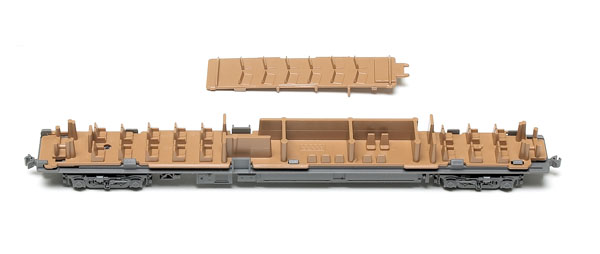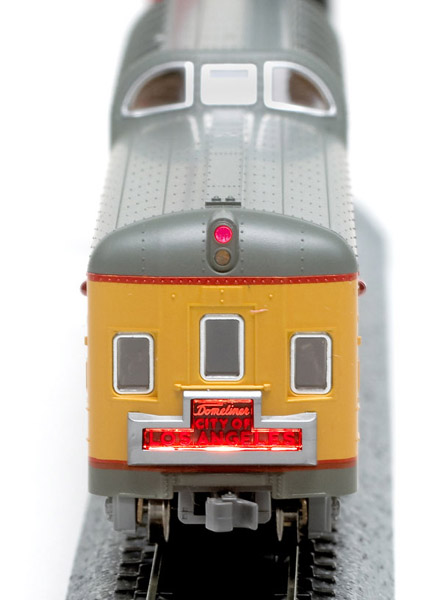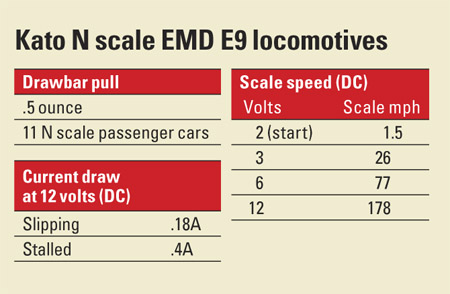detailed cars and locomotives that run as reliably as Swiss watches.
The prototype. The Union Pacific’s City of Los Angeles ran between Chicago, Ill., and its namesake city. The train was equipped with dome cars built by American Car & Foundry in 1954 and 1955. In 1956 the dome-lounge observation was remodeled to be a mid-train lounge car and lost its distinctive tail sign. The Kato City of Los Angeles models the train as it looked prior to 1956 with its neon tail sign intact.
For more information, see the book The Union Pacific Streamliners by Harold E. Ranks and William W. Kratville (Kratville Publications).
All the cars match photos and diagrams in the Kratville book. The paint is smooth and evenly applied. The lettering is straight and matches prototype photos.
The body shell of each car is a press fit and easy to remove. The cars’ interiors are molded in brown plastic and match prototype diagrams.
The cars have Kato operating knuckle couplers that are truck-mounted with sprung shanks. These couplers held the train together at speed, but I found them unreliable when trying to couple a car to a locomotive or another car at prototypical yard speed.
Unlike the passenger cars, which have gray trucks, the Kato E9 locomotives have aluminum-colored trucks. The prototype diesels were delivered with gray trucks, and the trucks weren’t repainted aluminum until 1956 or 1957.
The Kato E9 ran reliably. A single E unit can easily pull the entire 11-car train even though none of the locomotive’s wheels have traction tires. The A-B-B-A arrangement looked prototypical and led our City of Los Angeles without any problems, even through a yard ladder and crossover.
Both the A and B units accelerated smoothly throughout their speed range. You can see the speed chart to the right. However, the model’s 178 mph top speed is a lot faster than that of the prototype.
The locomotive’s body shell is press-fit and easy to remove. The motor and two brass flywheels are enclosed in a die-cast metal frame.
The printed-circuit board is attached to the top of the frame. Board replacement Digital Command Control decoders are available from Digitrax (DN163K0A) and Train Control Systems (K0D8) that fit in the A and B units.
Kato has done a great job bringing the City of Los Angeles to N scale.
Manufacturer
Kato USA Inc.
100 Remington Rd.
Schaumburg, IL 60173
www.katousa.com
Era: 1955
Features
- All-wheel drive and electrical pickup (E9A and E9B)
- Five-pole motor with dual brass flywheels (E9A and E9B)
- Kato knuckle couplers at correct height with user-installed trip pins
- Light-emiting diode (LED) headlights (E9A unit only)
- Metal wheels in gauge
- Minimum radius: 11″
- Nine Unitrack 93⁄4″ straight sections and one 2″ section
- Weight: 5 ounces (E units). Cars weigh 1.25 ounces (.2 ounce too light according to National Model Railroad Association RP-20.1)

















